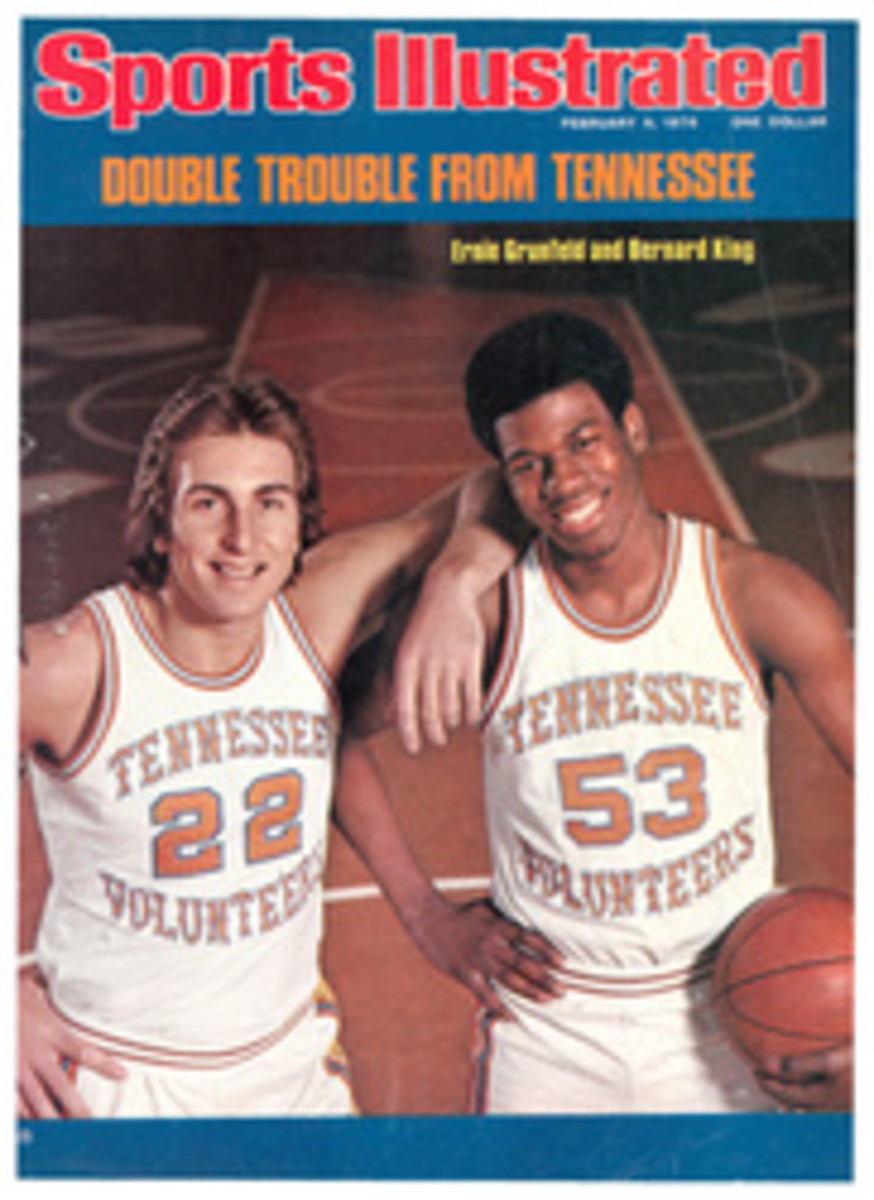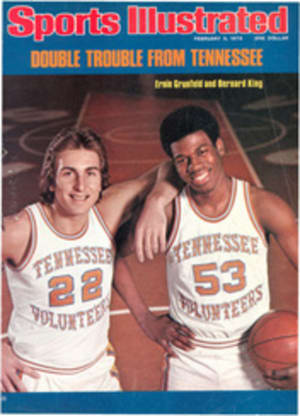
GAS PAINS STRIKE AT DAYTONA
In motor sports, as in zoology, there are "splitters" and there are "lumpers." The splitters demand separate races for every type of car, whether open-wheeled Indy or formula racers, closed grand-touring or stock cars, and so on and on and on. The lumpers, by contrast, like to ponder what would happen if the greatest possible variety of racing machinery were to run on the same track at the same time. Last weekend at Daytona the lumpers had their way—and took their lumps.
The occasion was the 24 Hours of Daytona, America's premier endurance contest. Some people call it "the annual race of the century," because it seems to drone on that long, but at 9 a.m. last Sunday, with cars sputtering and coughing to a stop everywhere and their weary drivers—the only members of a team permitted to make on-course repairs—lugging heavy gas cans through the infield, there was some suspicion that this also would be the first automobile race in history to be decided on foot. The intention had been to give this year's endurance trial a new look, but this was a little more than anyone had bargained for.
The reason for the revitalization of the race was that in recent years, with the absence of those sleek and costly European prototypes that used to compete on Daytona's 3.84-mile road course for points in the "world manufacturers' championship," the race had lost its luster, becoming a bantamweight slugfest among grand-touring cars. The last two outings were won by racing versions of the Porsche Carrera driven by a couple of Jacksonville worthies named Peter Gregg and Hurley Haywood.
So in an effort to breathe life into the event, NASCAR czar Bill France introduced a whole new class of cars to the competition—the Grand Internationals. If you squinted a bit, you could see that the hastily prepared GIs were nothing more than a collection of monsters out of the NASCAR late-model sportsman ranks, stock cars tricked out for their new role with headlights and outsized gas tanks. This should have been a lumper's dream come true—big-engined American stock cars locking bumpers with their German-made road-racing equivalents. It didn't quite work out that way, but even after the road racers had asserted their superiority, ennui was staved off by intimations of sabotage.
In addition to the Porsches, a squadron of German BMWs was on hand to test the big stockers' mettle. Also present were Datsuns, Mazdas, Corvettes and even a diminutive Honda Civic—fully 18 varieties of cars in the 72-car field. The Grand International class, seven cars strong, included some of the top names in NASCAR racing. David Pearson was on hand with a Ford Torino and his 22-year-old son Larry as co-driver. Hershel McGriff, the 48-year-old lumber baron from Bridal Veil, Ore. (pop. 150) and his 19-year-old son Doug shared a Nova. The Alabama Gang, Bobby and Donnie Allison, showed up in a tough Chevy Nova. Buddy Baker, in a Dodge Dart, had added his considerable presence to the proceedings. All those big names—plus a dash of good weather in an otherwise frigid Florida winter—served Bill France's purpose nicely. A crowd of some 25,000 turned out, even though it was clear from the start that the Grand Internationals were not quite ready for serious road racing.
The best any stocker could do in qualifying was Bobby Allison's 13th place on the starting grid. He had cranked his Nova around the nine-turn course at 113.09 mph, more than 5 mph slower than pole-winner Brian Redman in one of the three factory BMWs. Redman, the Briton who has won the Formula 5000 championship the past two years, was teamed with Gregg, who had jumped from Porsche. Englishman David Hobbs was teamed in the second-fastest car, another BMW, with NASCAR's Benny Parsons, last year's Daytona 500 victor. The fastest Porsche Carrera on the grid was driven by Al Holbert of Warrington, Pa., who last year won six Camel GT races, and Claude Ballot-Lena, of Paris. It had qualified fifth.
Still, qualifying is perhaps the least important part of a race that runs, even if intermittently in this case, twice around the clock. When the green flag flapped at 3 p.m. Saturday for the start, the Gregg-Redman BMW leaped to the lead, pressed only by a flying wedge of metal and fiber glass roughly identifiable as a Corvette and driven by John Greenwood. 'Vette fanciers hollered themselves hoarse for an hour as Greenwood alternated in the lead with Gregg, but a ring and pinion gear failure brought the Corvette into the pits for a costly 24-lap repair job. Meanwhile, David Pearson was warming hearts with a hell-for-naugahyde charge from the midst of the pack to as high as ninth place. The big red and white Purolator Ford Torino, with its guttural 488 cu. in. engine roaring, seemed to gobble up the lesser machines in its path. For one moment, on the infield road portion of the course, it looked as if Pearson's car had literally swallowed the Honda Civic and then fired it out its exhaust stacks. But the stockers ultimately paid the price of their greater weight and power, having to replace brake pads at twice the rate of their smaller cousins, and refueling more frequently as well. No way they could keep up, but if only they could last the full 24 hours, then perhaps there was a future for the breed on road courses everywhere—even Le Mans.
Indeed, three of the stockers, led handily by Pearson, managed to finish the 24-hour grind, a success ratio as good as that of any other car category. But fascination with the success of the new GIs paled against the drama of what came to be known as "Daytona's fuel crisis."
At 9 a.m., the leading BMW pitted with a 16-lap lead, its crew routinely topped off the fuel tank with fresh gasoline, and Redman rolled down the pit road—and stalled. The other two factory BMWs also refueled and also choked out. Gregg, having quickly recovered from a case of food poisoning that had brought him in for an unscheduled pit stop as dawn broke, was running about madly in fear of losing the almost certain victory that lay ahead. Mechanics diagnosed the troubles as water in the gasoline. The No. 43 Carrera of Miami's John Graves also succumbed to wet gas. And during the hour and 10 minutes the BMWs were being wet-nursed, the Porsches of Holbert and Haywood closed the gap to be on the same lap as the Gregg-Redman car.
When it became clear that the gas was at fault, not the cars, officials wisely and fairly black-flagged the race, allowing the teams time to purge their fuel systems, and set the clock back to 9 a.m. when the spoiled gasoline had first had its effect. That re-established Gregg and Redman's 16-lap cushion.
How had the gas flap happened? The 104-octane fuel, pumped fresh during the race weekend into the trackside station, was checked and found to be untainted. Then the tank truck that delivers fuel to the pits was examined; one of its three compartments revealed emulsified water—water that had not been in there long enough to have sunk, with its greater specific gravity, to the tank's bottom. Though eight men watch over the station and the truck at all times, the possibility of sabotage could not be ruled out; indeed, it seemed the logical explanation. Union Oil officials quickly impounded the gas truck and began an investigation. Meanwhile, a truckload of fresh gas came zooming down from Jacksonville, pedal to the metal, probably setting a new speed record for I-95.
The race resumed shortly before 1 p.m. and the Gregg-Redman car, running on only five of its six cylinders now, gingerly retained its lead. A rainstorm that sloshed in complicated conditions but not the inevitable finish. When the checkered flag fell on schedule, two hours after the unusual command of "Gentlemen, restart your engines," Peter Gregg had become the first driver ever to share three victories in the 24 Hours of Daytona. He and Redman covered 545 laps—2,092.8 miles, at an average speed of 104.04 mph, exclusive of the prolonged fuel crisis-provoked pit stop—and in the process won nearly $20,000.
More important, the race demonstrated the potential of the Grand International cars as road racers and with it the worth of the lumper philosophy: sure, let everyone race, the more the merrier—and the hairier.
PHOTO
Despite its smaller engine, the winning BMW ran away from the stock cars and Corvettes.
PHOTO
All racing stopped when the fuel got fouled.

